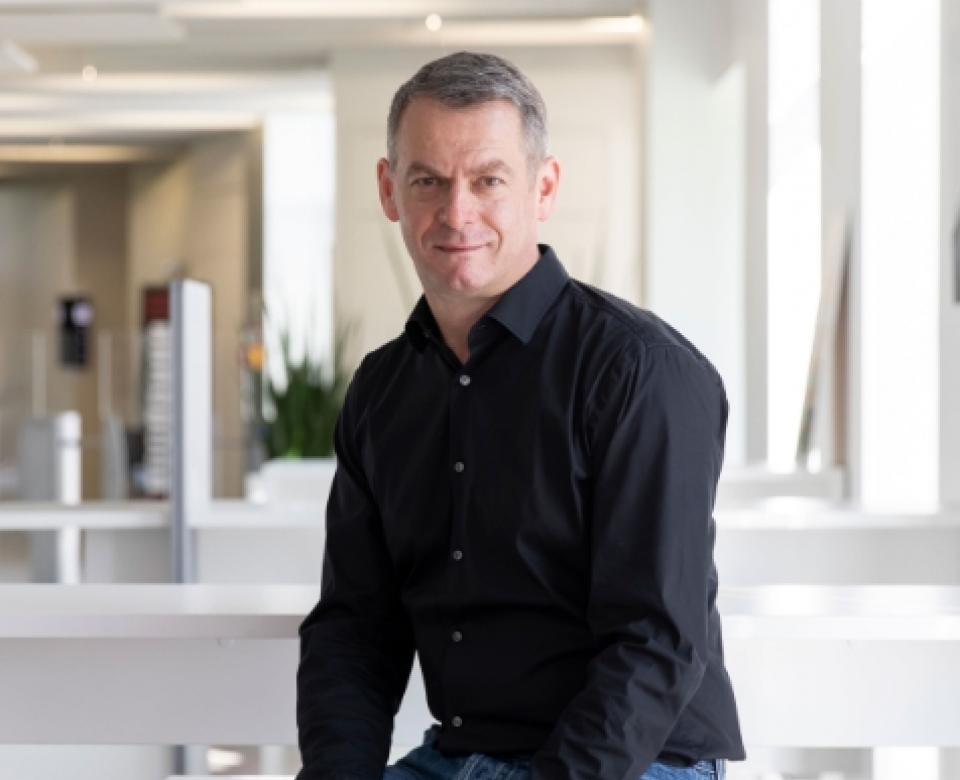
"Anticipating the world of tomorrow", an interview with Ludovic Noblet, Director of Hypermedia at b<>com
What are the burning issues in the hypermedia sector?
Digital is becoming ambient in our lives. We've entered a "beyond digital" era in which issues of experience, acceptability, usability, trust, and security are fundamental. b<>com's vision is one of a world where the real will be immersed in the virtual, and the virtual in the real, with advanced interactions between users and both content and containers alike, including connected objects and artificial intelligence, to take two examples. A mixed reality between the digital world and the real, with the human at the center. In this context, issues that encompass and go beyond technology are cropping up: Establishing trust and developing security, but also all aspects related to acceptability (physiological, psychological, ethical, and social). All fields of everyday life are affected: Food, health, education/training, employment, media, entertainment, etc. On our own level, this vision guides the work of b<>com's four "Hypermedia" labs: New Media Formats, Immersive Interactions, Digital Trust & Identity, and Usage & Acceptability.
What are the new challenges in technology?
The first challenge is tied to the fact that we are about to witness a considerable increase in the technological complexity of products and services. This phenomenon is mainly due to technological hybridization, and the increase in the volume of data that will need processing, interpreting, representing, distributing, or outputting for a given usage. This challenge requires the ability to simultaneously handle technology in both cross-disciplinary AND specialized ways. This is a major issue for everyone, which b<>com's teams are working on and which will mean developing a vision as to the right mix between proprietary, standardized, and open-source technologies. Specifically for "Hypermedia" activities, it means treating both content and container as a medium for interaction and mediation between the digital world and the human. This will concern both professional applications and those intended for the general public.
Much of our work covers representation. Taking media formats as an example, it must offer creators the best tools and users the best immersion, both visual and auditory, while dealing with issues like lag, real-time performance, compression, and versatility. In virtual reality, we're focusing on five paths, which are: Meaning and purpose through intent and narration, ultra-realistic content including advanced modes of collaboration, interaction, and presence, the social (multi-user) dimension, open navigation, and finally artificial intelligence applied to collaboration and interaction. For augmented reality, we're working on three fundamental technological challenges, which are computer vision and pose estimation, and unconstrained registration, again with machine learning forming a sizable share, and lastly, holography.
For issues of trust and security, we're currently focusing on matters related to fraud, and identity theft in particular. For example: Authentication related to access to digital services. This is a critical subject today, which will become even more so in this "beyond digital" world.
Finally, our "Usage & Acceptability" activities are cross-disciplinary. They rely on key skills in applied cognitive sciences, and primarily relate to the direction of technology choices, both in development and when using those technologies.
All of this work is being conducted with an "ecosystem" approach that relies on industrial alliances and involvement in standardization bodies, open-source communities, and industrial consortia.
Why has b<>com chosen to take a stand on these issues?
b<>com is a private institute of research and technology. Its vision and strategy are jointly defined with our investors, whether they're SMEs, academia, or corporate. Finally, our goal is to anticipate the world of tomorrow, via the transfer of technologies, knowledge, skills, and impact, while sharing the risk of investment both in areas of exploration and operation. Our approach is pragmatic, and includes iteration and rapid prototyping, always with the desire to sustain and adapt our work in the face of concrete feedback. It is also accompanied by a modern, competitive vision and aspects related to intellectual property, focused on how to make use of it. In light of the increasing technological complexity and hybridization that will be seen in tomorrow's products and services, b<>com represents a considerable, economically efficient asset for its investors.

